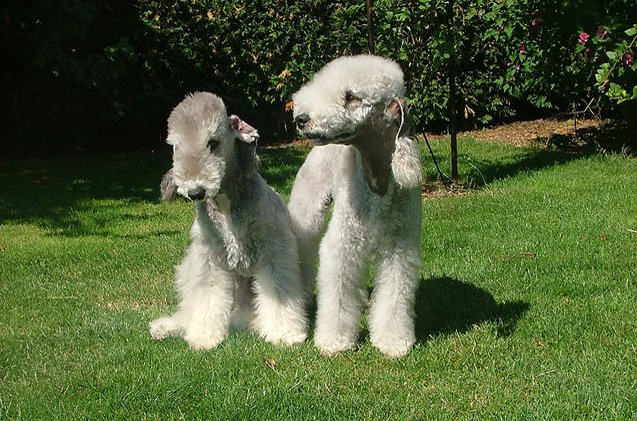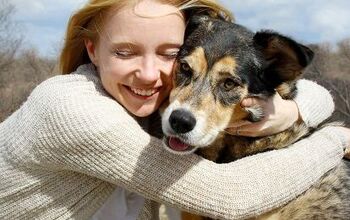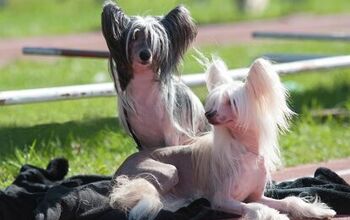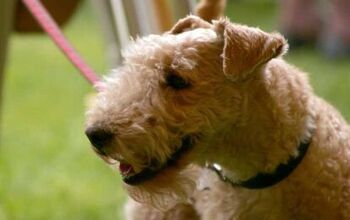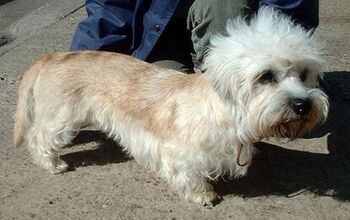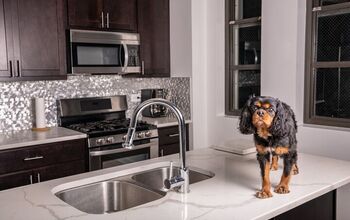Bedlington Terrier


About Bedlington Terrier
If you saw this dog walking down the street, you may do a double take. Was that a lamb or a dog? The Bedlington Terrier is most certainly a dog, even if it’s unusual looking. A true terrier in every sense of the word, this breed makes a wonderful family addition. He loves playing with the kids and enjoys a good cuddle session at the end of the day. He’ll also keep an eye out for people he thinks are unsavory and let you know if they’re getting a little too close for comfort.
When he’s not vying to be the center of attention, the Bedlington Terrier is active and athletic, and does well in agility competitions, Earthdog trials and in the show ring. He gets along well with other dogs when raised with them and will give smaller outdoor animals a run for their money. Read on to learn more about this interesting dog.
If you saw this dog walking down the street, you may do a double take. Was that a lamb or a dog?
Developed in the early 1800s, this breed was named for the Bedlington Mining Shire in the county of Northumberland, England. It was used to primarily to hunt vermin, but coal miners also raced the dogs for sport, as its lean body was built for speed and endurance. Bedlingtons were pitted against Whippets and often won these races.
Once word got about this wonderful breed, hunters and sportsmen began to use them to catch rabbits, otters, polecats and foxes. They could hunt for extended periods of time and never get tired. They were even used in the brutal sport of dog fighting. These dogs would never instigate a fight, but once involved, would fight to the death.
The debate is still on about the Bedlington Terrier’s ancestry, but this breed could be the result of the Whippet, Otterhound, Kerry Blue Terrier, Rothbury Terrier, Soft Coated Wheaten Terrier or the Dandie Dinmont Terrier.
This is an active breed, so you’ll have to make sure you’re giving your Bedlington Terrier enough to eat. Be sure to feed your dog about 1 to 1.5 cups (depending on the brand of dog food) of high-quality dry food a day, divided into two meals.
Bedlington Terriers tend to have a mind of their own, so they may not take kindly to your commands.
Even though this is an intelligent breed, he’s still a terrier. You may have a challenge on your hands, especially if you haven’t had much dog-training practice. Bedlington Terriers tend to have a mind of their own, so they may not take kindly to your commands. For the best results, treats and positive reinforcement will garner what you want. If you let him think that the training benefits him, he’ll be more likely to pick up good behaviors.
Once basic obedience has been taught, you may want to enroll your Bedlington Terrier in agility or Earthdog training. He loves to dig, so Earthdog will help him tap into these instincts. And with his lithe body, he’s a natural for agility courses.
A small- to medium-sized breed, the Bedlington Terrier weights between 17 and 23 pounds.
Alert, loyal and strong willed, the Bedlington is a true terrier. They love to play with kids and will cuddle on the couch after a long day of play. A great watchdog, this breed will bark whenever a stranger approaches the house. And even if it’s not a stranger, this dog will bark to greet family and friends alike. Yep, you can say that this dog loves to bark. To keep this trait in check, training and socialization are mandatory.
When raised with other dogs, the Bedlington Terrier will fit right into the group. But with strange dogs, he can become aggressive. When let outside, keep your Bedlington in a secure fenced in area and always supervised, as the breed is known to dig his way out of a yard. As well, he’ll chase any small animal that crosses his path, so if he’s off-leash, he’s not easily called back.
This is a healthy breed, but the Bedlington Terrier has a few health problems owners should be aware of. One of the most common issues in the breed is copper toxicosis, a hereditary disease where the liver can’t expel dietary copper, which leads to a buildup in the body that result in illness and death. Be sure to have your Bedlington tested. Other issues include renal cortical hypoplasia, retinal dysplasia, patellar luxation and distichiasis.
The Bedlington Terrier has an average lifespan of 11 to 16 years.
This is an active breed, but a daily walk can be sufficient exercise for the Bedlington Terrier. He also does well on hikes and jogs, if you’re so inclined. Because of their smaller size, this breed can live comfortable in an apartment, as long as they get outside for a daily walk
Playing with children is a great form of exercise for the Bedlington Terrier. But you should teach children not to play too roughly with this breed, as this dog will nip or bite when pushed too far.
Alert, loyal and strong willed, the Bedlington is a true terrier.
The American Kennel Association says this about the breed: “Graceful and lithe in appearance, the Bedlington Terrier has a big heart and loveable nature. The breed is best known for its curly, woolly coat which starts out dark in puppyhood and fades to a pale bluish gray, sandy or liver, giving him the appearance of a lamb.” The AKC first recognized this breed in 1886.
Sporting a coat texture that is both soft and wiry, the Bedlington Terrier’s hair is harsh to the touch. As well, this hair is prone to curling, especially around head and face. Most puppies are born with a darker coat that lightens as it gets older. You can find coat colors in white, blue, liver, sandy, blue and tan, sandy and tan or liver and tan. Bedlington’s also have a topknot that’s lighter than the rest of his coat.
Bedlington Terriers should be combed once a week and taken to a professional groomer for his lamb clip.
Start the socialization process early for the Bedlington Terrier, as he has a tendency to mistrust other people and dogs. Take your dog to all kinds of places so he can meet new people and be exposed to new situations.
Photo credit: ccho/Flickr; David Owsiany/Wikimedia

Amy Tokic, Editor of PetGuide.com, is a passionate animal lover and proud pet parent of Oscar, a Shih Tzu/Chihuahua cross, and Zed, a Japanese Chin. Her love of animals began in kindergarten, when she brought her stuffed dog Snoopy into class with her every day. Now, she writes about her adventures in pet ownership and tirelessly researches products, news and health related issues she can share with other animal enthusiasts. In her free time, Amy loves perusing used book and record stores, obsessing over the latest pet products available and chasing squirrels with wild abandon (a habit attributed to spending too much time with her pooches).
More by Amy Tokic



